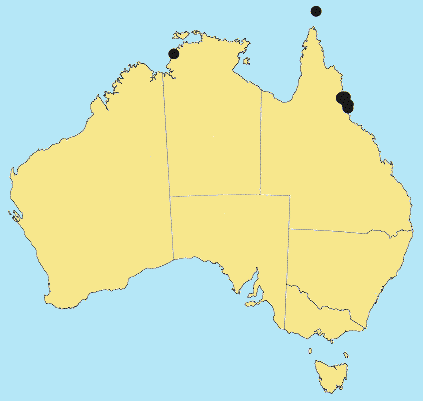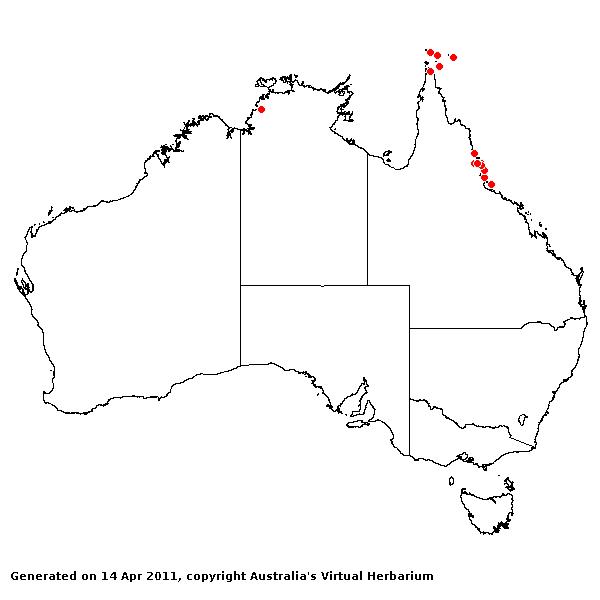Digitaria setigera Roth ex Roem. & Schult. Syst.Veg. 2: 474 (1817).
Classification. (GPWG 2001) : Subfamily Panicoideae. Paniceae.
Type of Basionym or Protologue Information: India:, Heyne s.n. (HT: B; IT: K).
Recent synonyms: D. pruriens.
Key references (books and floras): [2002] D.Sharp & B.K.Simon, AusGrass, Grasses of Australia.
Habit. Annual. Culms decumbent, 20–80 cm tall, 2–5 -noded. Mid-culm internodes glabrous. Mid-culm nodes glabrous. Lateral branches simple. Leaf-sheaths glabrous on surface or hairy. Leaf-sheath auricles absent, or present. Ligule an eciliate membrane. Leaf-blades linear or lanceolate, flat, 3–25 cm long, 3–13 mm wide. Leaf-blade surface smooth or scabrous, glabrous or indumented.
Inflorescence. Inflorescence compound, a panicle of racemes. Racemes 3–15, 4–15 cm long. Central inflorescence axis 1–6 cm long.
Spikelets. Spikelets pedicelled, 2 in the cluster. Fertile spikelets 2-flowered, the lower floret barren (rarely male), the upper fertile, comprising 1 basal sterile florets, comprising 1 fertile floret(s), without rachilla extension, lanceolate or elliptic, dorsally compressed, 2–3.2 mm long.
Glumes. Glumes thinner than fertile lemma. Upper glume oblong or ovate, 0.3–1.1 mm long, membranous, without keels, 0–3 -nerved. Upper glume surface glabrous or indumented. Florets. Basal sterile florets 1, barren, without significant palea. Lemma of lower sterile floret 100 % of length of spikelet, membranous, 7 -nerved.
Fertile lemma 2–3.1 mm long, without keel. Lemma apex muticous. Lodicules present.
Continental Distribution: Africa, Temperate Asia, Tropical Asia, Australasia, Pacific, and South America.
Australian Distribution: Northern Territory, Queensland, Norfolk I, Christmas Is, Cocos Keeling Is, Ashmore Reef, Coral Sea Is.
Northern Territory: Darwin & Gulf. Queensland: Cook, North Kennedy.
Notes. Australian collections of this species are meagre. Relative sizes of the glumes and spikelet distinguish it from other members of the section Digitaria.
In tropical and subtropical sub-humid woodlands. Flowers Feb.-Apr.




